Basic Environmental Mechanisms. Affecting Cultural Heritage. Understanding deteroration mechanism for conservation purposes
16,90€ Il prezzo originale era: 16,90€.16,06€Il prezzo attuale è: 16,06€.
E-BOOK IN PDF FORMAT – E-BOOK IN FORMATO PDF
For ethical reasons, the conservation of cultural heritage is a duty for all nations. Slowly, decision makers are beginning to understand that caring about cultural heritage and especially about museums, library and archival collections si a valuable long-term investment for their economy and in the interest of their citizens. The accessibility of movable heritage depends not only on its direct conservation but also on preventive conservation because the quality of the indoor environment is crucial for the preservation of a collection. Sensitive materials, displayed in an aggressive environment may suffer from chemical attack of pollutants, leading to irreversible damage after only a few weeks of inappropriate exposure.
The interpretation of results on the impact of pollutants on the degradation of artefacts and consequently, any appropriate measure to prevent damage, requires close collaboration between multidisciplinary key players: chemist concerned with environmental effects and material degradation, physicists concerned with microclimate and physical deterioration mechanism, conservators, conservation scientist, art historians, curators, environmental engineers, show case manufacturers, and even politicians and decision makers concerned with international standards.
BASIC ENVIRONMENTAL MECHANISM
Affecting Cultural Heritage
Edited by Dario Camuffo, Vasco Fassina, John Havermans
Pages 176, illustrated
E-BOOK IN PDF FORMAT – E-BOOK IN FORMATO PDF
————————————————–
CONTENTS:
FOREWORD
Dario Camuffo, Vasco Fassina, John Havermans
CHAPTER 1
THE ROLE OF TEMPERATURE AND MOISTURE
Dario Camuffo
CHAPTER 2
HOW TO MEASURE TEMPERATURE AND RELATIVE HUMIDITY. iNSTRUMENTS AND INSTRUMENTAL PROBLEMS
Dario Camuffo, Vito Fernicola
CHAPTER 3
MICROCLIMATE MONITORING IN A CHURCH
Dario Camuffo, Chiara Bertolin, Vasco Fassina
CHAPTER 4
ACCEPTABLE AND NON ACCEPTABLE MICROCLIMATE VARIABILITY: THE CASE OF WOOD
Lukasz Bratasz
CHAPTER 5
THE ROLE OF LIGHT
Mauro Bacci, Cosanza Cucci
CHAPTER 6
BASIC CHEMICAL MECHANISM INDOORS
David Thickett
CHAPTER 7
BASIC CHEMICAL MECHANISMS OUTDOORS
Vasco Fassina
CHAPTER 8
VOLATILE ORGANIC COMPOUNDS (VOCs) RELEASED BY WOOD
Marianne Odlyha, Carl Johan Bergsten, David Thickett
CHAPTER 9
MEASURING GASEOUS AND PARTICULATE POLLUTANTS
INSTRUMENTS AND INSTRUMENTAL PROBLEMS
Erwin Rosenberg, Franco De Santis, Velichka Kontozova-Deutsch, Marianne Odlyha, René van Grieken, Francesca Vichi
– INTRODUCTION
– THE USE OF DIFFUSIVE SAMPLERS
– DOSIMETRY
– ATMOSPHERIC PARTICULATE POLLUTANTS
CHAPTER 10
SOILIBGG DAMAGE AND PERCEPTION
Peter Brimblecombe
CHAPTER 11
PAPER DETERIORATION AND THE ROLE OF AIR POLLUTANTS
John Havermans
CHAPTER 12
SURFACE PROTECTION OF POROUS INORGANIC MATERIALS
Vasco Fassina
LIST OF CONTRIBUTORS
COST – European Cooperation in Science and Technology – is the oldest and widest European intergovernmental network for international cooperation between nationally funded research activities. COST creates scientific networks and enables scientist to collaborate in a wide spectrum of activities in research and technology. Established by the Ministerial Conference in November 1971, COST is presently used by the scientific communities of 35 European countries. COST activities are administrated by COST office.
As precursor of advanced multidisciplinary research, COST has a very important role for the realisation of the European Research Area (ERA) anticipating and complementing the activities of the Framework Programmes, constituting a “bridge” towards the scientist communities of emerging countries, increasing the mobility of researches accross Europe and fostering the establishment of “Networks of Excellence” in many key scientist domains.
Recensisci per primo “Basic Environmental Mechanisms. Affecting Cultural Heritage. Understanding deteroration mechanism for conservation purposes” Annulla risposta
Devi effettuare l’accesso per pubblicare una recensione.
Ti potrebbe interessare…
Art and Restoration
Art and Restoration
Indoor Environment and Preservation – Ambiente interno e conservazione

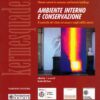
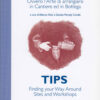
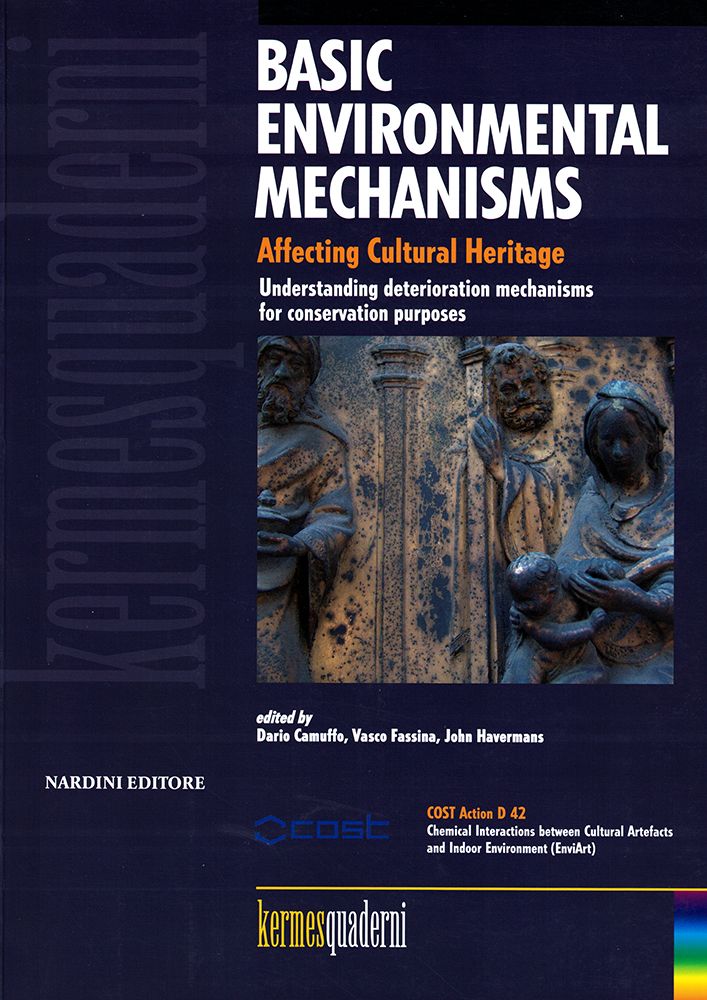
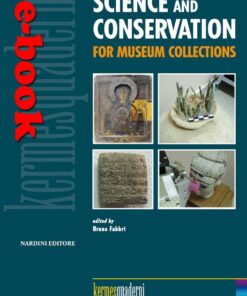
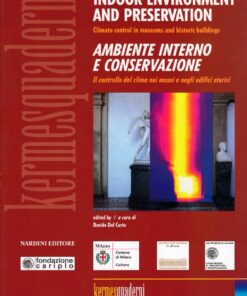
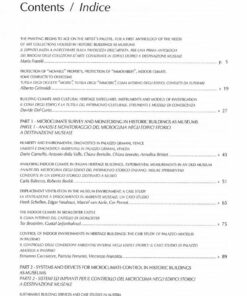
Recensioni
Ancora non ci sono recensioni.